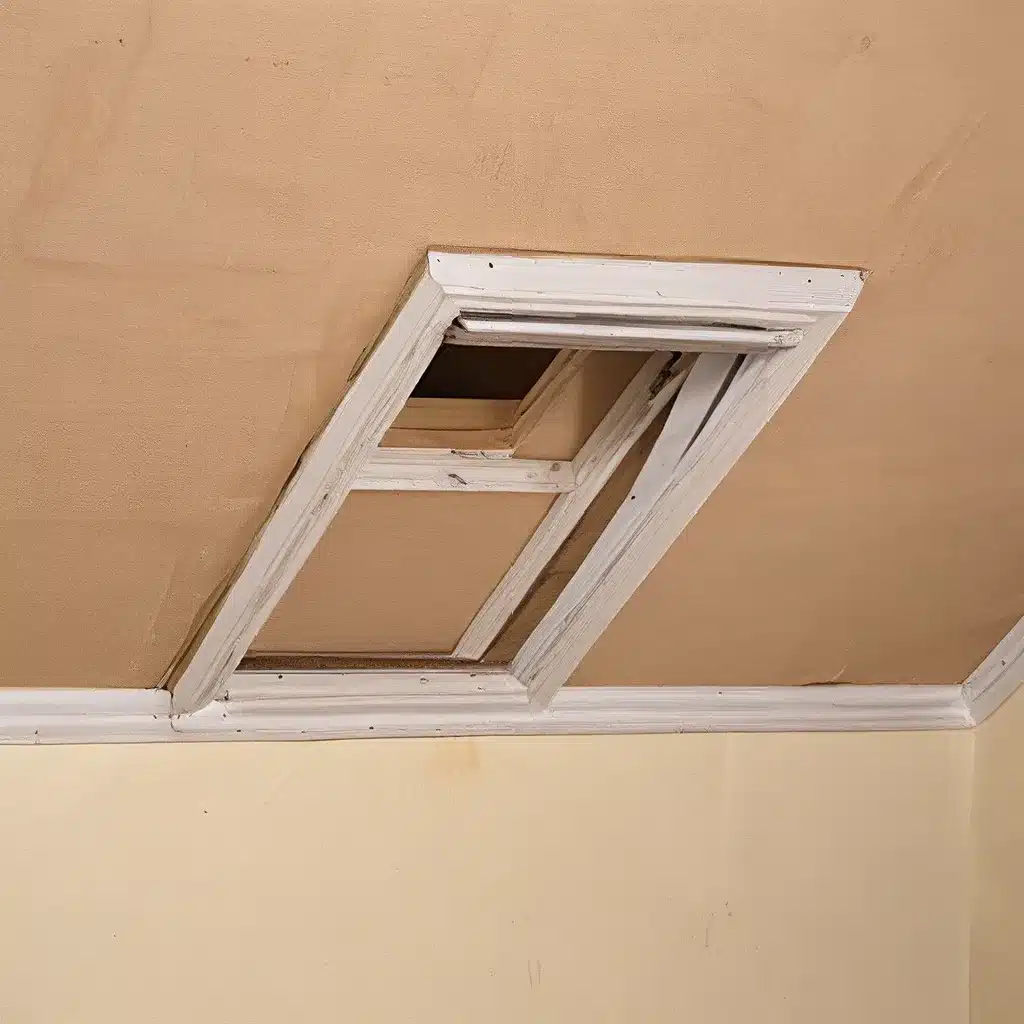
The Importance of Proper Attic Ventilation
As a homeowner, it’s easy to overlook the importance of your attic’s ventilation system. After all, it’s tucked away out of sight, and as long as the temperature feels comfortable upstairs, what could possibly be the problem, right? Wrong. Improper attic ventilation can wreak havoc on your home, causing everything from roof damage to skyrocketing energy bills.
You see, your attic is the lungs of your home. It’s the space where hot, moist air escapes and cool, fresh air circulates. But if that airflow is restricted, it’s like putting a pillow over your face – your home can’t breathe properly. And that’s when the problems start.
The Dangers of a Poorly Ventilated Attic
Let’s start with the roof. Without proper ventilation, the trapped heat and cold air in the attic can significantly shorten the lifespan of your roof. In the summer, that scorching attic heat literally “burns up” the roof, deteriorating the adhesives and causing shingles to crack and curl. And in the winter, the condensation that forms when the warm indoor air meets the cold attic air can lead to swelling and warping of the roof decking.
But the damage doesn’t stop there. A poorly ventilated attic can also lead to mold, mildew, and even insect infestations. These not only compromise the structural integrity of your home, but they can also pose serious health hazards to you and your family. Imagine trying to sleep in a bedroom where the walls are covered in fuzzy green mold – not exactly a cozy, comfortable environment, is it?
And let’s not forget about energy efficiency. When your attic is overheated, it forces your air conditioning system to work overtime, leading to skyrocketing energy bills. Suddenly, those high temperatures you chalked up to the weather outside don’t seem so innocent, do they?
Recognizing the Signs of Inadequate Ventilation
So, how can you tell if your attic isn’t getting the airflow it needs? Here are some telltale signs:
-
Excessive Heat in the Upstairs Rooms: If your upstairs rooms feel significantly hotter than the rest of your home, even with the AC running, it’s a clear sign of poor attic ventilation.
-
Ice Dams in the Winter: Those pesky icicles forming along the edges of your roof are a sure sign that warm air is getting trapped in your attic and condensing on the cold roofing materials.
-
Mold or Mildew Growth: If you start to notice fuzzy, discolored patches on your attic walls or ceiling, or a musty odor, it’s time to investigate your ventilation system.
-
Sagging or Warped Roof Decking: Over time, the constant expansion and contraction of the roof materials due to poor ventilation can lead to a wavy, uneven appearance.
-
Cracked or Curled Shingles: If your shingles are starting to look more like potato chips than a sleek, cohesive roofing system, it’s a sure sign that your attic ventilation needs some TLC.
Determining the Right Amount of Ventilation
Okay, so you’ve identified the problem – now what? The key is to have the right balance of intake and exhaust vents to ensure proper airflow. According to the International Residential Code (IRC), attics require a minimum of 1 square foot of net free area (the open area for air to pass through) for every 150 square feet of attic space.
Let’s break that down with an example. Say you have an attic that’s 1,500 square feet. To properly ventilate that space, you’d need 10 square feet of net free ventilation area (1,500 / 150 = 10). Converted to square inches, that’s 1,440 square inches (10 x 144).
Now, you can choose a combination of intake and exhaust vents to achieve that 1,440 square inches of net free area. Some popular options include box vents, ridge vents, and turbine vents. The key is to ensure you have a balanced system, with enough intake vents at the soffits or eaves to draw in cool air, and enough exhaust vents at the peak or upper levels to let the hot air escape.
Addressing Existing Ventilation Issues
If you’ve determined that your attic isn’t properly ventilated, there are a few steps you can take to improve the situation:
-
Install Ventilated Soffits: Replacing the solid soffits with perforated, ventilated ones can significantly increase the amount of fresh air being drawn into the attic.
-
Add Baffles in Vaulted Ceilings: If your home has areas with vaulted ceilings, installing baffles can help create a clear airflow path between the soffit vents and the exhaust vents.
-
Air Seal the Attic: Sealing any gaps or cracks in the attic can prevent warm, moist air from the living spaces below from entering the attic and causing condensation problems.
-
Upgrade to More Effective Exhaust Vents: Replacing old, inefficient exhaust vents with newer, larger models can boost the amount of hot air being expelled from the attic.
And of course, don’t forget to consult with a reputable roofing contractor who can assess your specific situation and recommend the best ventilation solution for your home. At Southern Roofing Co., we’ve been helping homeowners like you improve their attic ventilation for years, and we’d be happy to lend our expertise.
The Takeaway
Your attic’s ventilation system is the unsung hero of your home. It’s the silent guardian that keeps your roof healthy, your energy bills low, and your indoor air quality fresh. But when it’s not functioning properly, the consequences can be severe.
So, don’t ignore the warning signs. Take the time to inspect your attic and ensure it’s getting the airflow it needs. Because a well-ventilated attic isn’t just a nice-to-have – it’s a crucial component of a healthy, well-functioning home. And that’s something worth taking seriously.